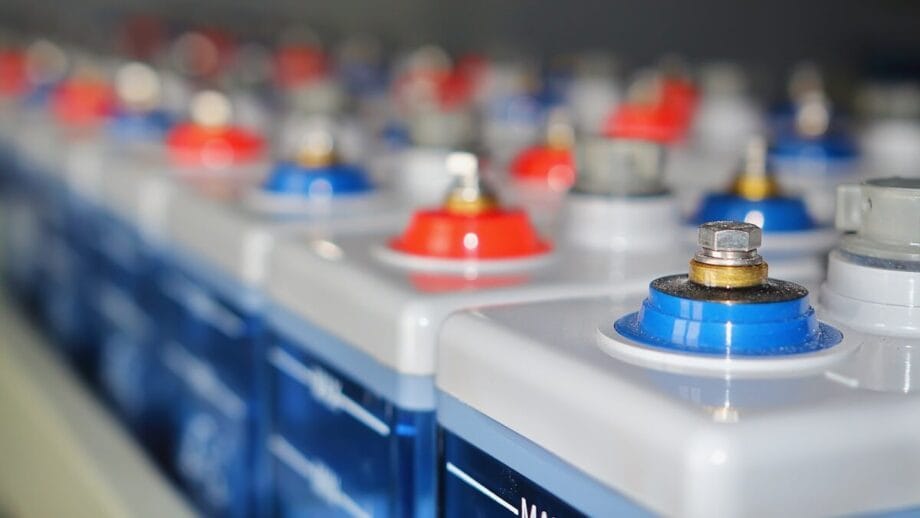Battery-powered systems form the backbone of countless operations across industries, from data centers and manufacturing facilities to emergency services and telecommunications networks. The reliability of these systems depends entirely on battery performance, yet many organizations continue operating without proper testing capabilities.
The hidden costs of battery failures extend far beyond replacement expenses. Unplanned downtime, data loss, equipment damage, and emergency repairs can cost organizations thousands of times more than the initial battery investment. Professional battery testing equipment provides the visibility needed to prevent these costly scenarios through proactive battery management.
Understanding the True Cost of Battery Failures

Battery failures in operational environments create cascading problems that impact multiple systems and processes simultaneously. When backup power systems fail during outages, organizations face potential data loss, equipment damage, and safety hazards. Manufacturing operations may lose hours or days of production when battery-powered systems fail unexpectedly.
The financial impact extends beyond immediate replacement costs to include overtime labor, expedited shipping for emergency parts, and lost productivity during system downtime. Many organizations discover that a single preventable battery failure costs more than investing in comprehensive testing equipment would have required.
Hidden Operational Impacts
Battery degradation affects system performance long before complete failure occurs. Weakened batteries force charging systems to work harder, increasing energy consumption and generating excess heat. UPS systems with degraded batteries provide reduced backup runtime, potentially leaving critical systems vulnerable during extended outages.
Equipment powered by declining batteries may experience performance issues, reduced efficiency, or unexpected shutdowns that disrupt operations. These subtle impacts accumulate over time, reducing overall system effectiveness even when catastrophic failures don’t occur.
Types of Battery Testing Equipment for Different Applications
“Every battery holds a story – let the right testing tool reveal its full power. Choose smart, go further, and trust your energy every step of the way.”ScienceDirect
Portable Battery Test Equipment
Portable battery test equipment serves organizations that need flexibility in testing various battery types across multiple locations. These handheld or wheeled units can test individual batteries or small battery banks, making them suitable for maintenance teams servicing diverse equipment.
Modern portable testers include multiple testing modes for different battery chemistries and applications. Features like data logging, computer connectivity, and automated report generation transform basic testing into comprehensive battery management programs.
The portability factor allows testing in locations where permanent monitoring systems would be impractical or cost-prohibitive. Maintenance teams can quickly assess battery condition across facilities without requiring extensive infrastructure installations.
Stationary Battery Testing Systems
Large battery installations benefit from permanent testing systems that provide continuous monitoring and comprehensive analysis capabilities. These systems integrate with facility management networks to provide real-time status information and automated alerting when problems develop.
Stationary systems excel at testing battery banks with hundreds or thousands of individual cells. They can perform complete capacity tests, impedance measurements, and thermal analysis while maintaining detailed performance histories for trend analysis.
Investment in stationary battery testing equipment makes sense for facilities with critical power requirements where battery failure would create significant operational or financial consequences.
Specialized Battery Cell Testing Equipment
Battery cell testing equipment provides the detailed analysis needed for high-reliability applications or when troubleshooting complex battery problems. These instruments measure individual cell parameters within battery packs, identifying weak cells before they affect overall performance.
Cell-level testing becomes particularly important for large battery installations where single-cell failures can compromise entire battery strings. Early identification of failing cells allows targeted replacement rather than replacing entire battery banks.
Advanced cell testing capabilities help optimize battery performance by identifying imbalances, connection problems, and capacity variations that reduce overall system efficiency.
Operational Benefits of Professional Battery Testing
“A single weak battery can bring an entire system to its knees. Professional testing spots the cracks before they widen, giving businesses time to act instead of react.”EMSYS Design
Predictive Maintenance Capabilities
Battery testing equipment enables predictive maintenance approaches that identify problems before they impact operations. Regular testing creates performance baselines and trend data that reveal gradual capacity loss or developing problems.
Predictive capabilities allow maintenance teams to schedule battery replacements during planned downtime rather than responding to emergency failures. This proactive approach reduces maintenance costs and eliminates disruption to critical operations.
The data collected through systematic testing helps optimize maintenance schedules based on actual battery condition rather than calendar dates or guesswork. This condition-based approach ensures maintenance resources are used efficiently while maintaining system reliability.
Improved Energy Efficiency
Well-maintained batteries operate more efficiently than degraded ones, reducing energy consumption for charging systems and improving overall system performance. Battery testing equipment helps identify efficiency problems early, allowing corrective action before significant energy waste occurs.
Optimal battery performance reduces strain on charging systems, extending their service life and reducing maintenance requirements. The energy savings from properly maintained batteries often justify testing equipment investments within the first year of use.

Enhanced System Reliability
Reliable battery performance directly correlates with overall system reliability. Regular testing with professional equipment ensures batteries can deliver expected performance when needed, reducing the risk of system failures during critical moments.
Testing identifies batteries approaching end-of-life conditions, allowing replacement before failure occurs. This proactive approach maintains system redundancy and prevents single points of failure from compromising operations.
Documentation from systematic testing provides evidence of proper maintenance practices for insurance claims, regulatory compliance, and warranty purposes.
Financial Justification for Testing Equipment Investment
“A small investment in testing equipment today can save a business from costly breakdowns tomorrow. Prevention, after all, is often the cheapest fix.”Ford
Cost Avoidance Through Prevention
The primary financial benefit of battery testing equipment comes from preventing costly failures and their associated impacts. A single prevented failure often provides a return on investment that exceeds the entire cost of testing equipment.
Cost avoidance includes preventing downtime, avoiding emergency repairs, and eliminating expedited shipping costs for replacement batteries. The cumulative value of these avoided costs builds substantial financial benefits over time.
Extended Battery Life
Proper testing and maintenance practices significantly extend battery service life by identifying and addressing problems that accelerate degradation. Batteries that receive proper care often exceed their expected service life by 20-50%.
An extended battery life directly reduces replacement costs and associated labor for installation. The environmental benefits of longer battery life include reduced waste generation and lower resource consumption.
Optimized Maintenance Spending
Testing data helps optimize maintenance spending by focusing resources where needed most. Instead of following rigid schedules that may waste resources on healthy batteries while missing problems elsewhere, testing guides efficient resource allocation.
Condition-based maintenance reduces both over-maintenance of healthy systems and under-maintenance of problematic ones. This optimization improves maintenance effectiveness while controlling costs.
Selecting the Right Battery Testing Equipment
“When you measure more, you risk less – discover the power of reliable results and watch your trust in every battery soar.”McKinsey
Assessment of Testing Needs
Selecting appropriate battery testing equipment requires careful assessment of battery types, testing frequency, and performance requirements. Consider the voltage ranges, current capacities, and battery chemistries present in your operations.
Evaluate whether portable flexibility or permanent installation monitoring better serves your needs. Large facilities with critical power requirements may justify permanent systems, while smaller operations or those with distributed equipment might prefer portable solutions.
Key Features and Capabilities
Important features to evaluate when selecting battery testing equipment include:
- Voltage and current ranges appropriate for your batteries
- Support for multiple battery chemistries
- Data logging and analysis capabilities
- Integration with existing facility management systems
- Automated testing and reporting functions
- Safety features and certifications
- Training and technical support availability
Consider future needs as well as current requirements, since testing equipment represents a long-term investment that should accommodate changing battery technologies and operational needs.
Return on Investment Calculations
Calculate return on investment based on realistic assessments of current battery-related costs and potential savings from improved maintenance practices. Include costs for unplanned downtime, emergency repairs, and premature battery replacements in your analysis.
Factor in energy savings from improved battery efficiency and extended battery life from better maintenance practices. These ongoing benefits continue throughout the equipment’s service life, providing cumulative value that far exceeds initial investment costs.
Implementation Best Practices
“Make maintenance and testing partners, not strangers. When both work as one, downtime melts away and reliability rules.”MDPI
Training and Skill Development
The successful implementation of battery testing equipment requires proper training for maintenance personnel. Understanding testing procedures, result interpretation, and appropriate corrective actions ensures maximum value from testing investments.
Training should cover safety procedures, equipment operation, and data analysis techniques. Many equipment manufacturers provide comprehensive training programs that help organizations develop internal expertise.
Documentation and Record Keeping
Systematic documentation of testing results creates valuable performance histories that support trend analysis and predictive maintenance programs. Establish standardized procedures for data collection, storage, and analysis.
Regular reporting helps management understand battery system performance and maintenance effectiveness. These reports support budget planning and demonstrate the value of testing programs.
Integration with Maintenance Programs
Battery testing should integrate seamlessly with existing maintenance programs rather than operating as isolated activities. Coordinate testing schedules with other maintenance tasks to maximize efficiency.
Use testing data to optimize overall maintenance strategies and resource allocation. The insights gained from systematic testing often reveal opportunities to improve other aspects of facility maintenance.
Maximizing Operational Efficiency Through Strategic Testing

Investing in battery testing equipment represents a strategic decision that impacts operational reliability, cost control, and system performance. Organizations that implement comprehensive testing programs consistently achieve better reliability, lower maintenance costs, and improved energy efficiency compared to those relying on reactive maintenance approaches.
The technology has matured to provide an excellent return on investment for most battery-dependent operations. As system complexity increases and reliability requirements grow more stringent, the value of professional testing capabilities becomes even more apparent.






